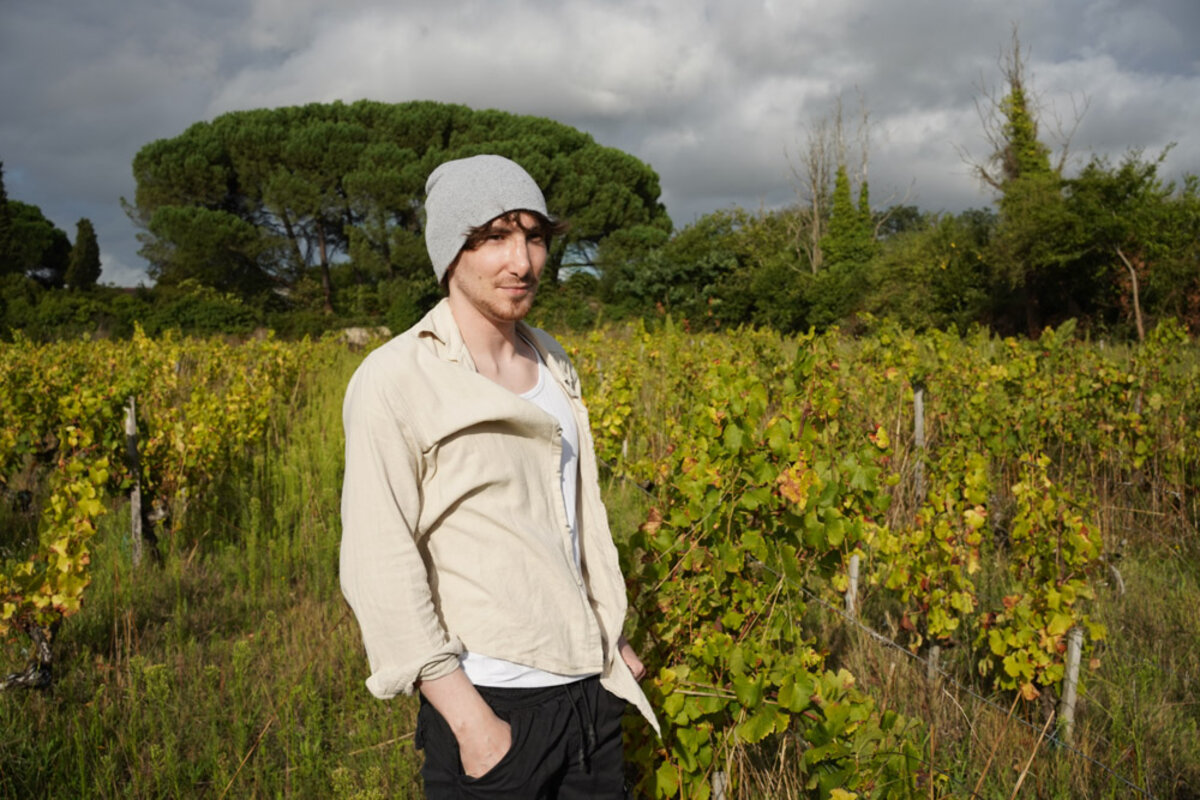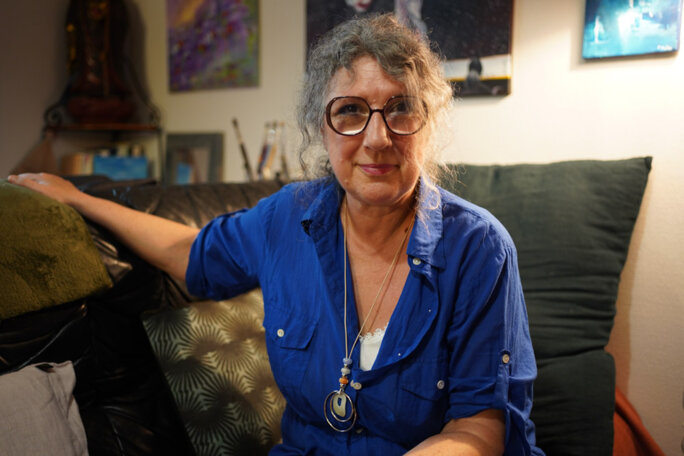The results of a four-year French scientific study, published in a report on Monday, reveal to what degree populations living within a distance of 500 metres from vineyards are notably more contaminated by pesticides, and young children in particular, than those living at least 5 kilometres distant from the vines.
It confirms that behind the emblematic picture-postcard images of French villages and hamlets lying alongside fields of vines is an unseen but menacing cloud of chemical residues that also reach inside homes.
The study, led by the French Agency for Food, Environmental and Occupational Health & Safety (ANSES) in conjunction with Santé Publique France (SPF), the French health ministry agency responsible for epidemiological monitoring of the population, was prompted by the discovery in 2012 of a cluster of cancer cases among children living in and around the village of Preignac, in south-west France.
Situated in the heart of the Sauternes-producing region, around 40 kilometres south-east of Bordeaux, the village has a population of just more than 2,000. Of the nine paediatric cancer cases discovered among the local population, a figure well above the national average, two included leukaemia, and another two were brain tumours.
The study published on Monday, called PestiRive, did not seek to establish or disprove a link between the exposure to pesticides and the health of the populations, planned for the future, but instead investigated the degree of that exposure.
Its broad findings were a logical conclusion given that, in France, wine growers use more pesticides on their land than does any other agricultural sector bar fruit tree growers (and among them, for apple production in particular). But in the detail, the 2,500-page report highlights how exposure to the molecules of phytosanitary products for those in winegrowing communities is found in far greater quantities than those living 5 kilometres or more away from the vines (and also one kilometre from other crop growing), as illustrated from samples of hair and urine, dust, household and outside air, and food grown in private gardens.
The study followed a population sample of 3,350 people, selected randomly from among inhabitants of the central-south-east region of Auvergne-Rhône-Alpes, the south-east Provence-Alpes-Côte d’Azur region, the central and eastern regions of Bourgogne-Franche-Comté and Grand Est, and south-west and southern regions of Nouvelle-Aquitaine and Occitanie.
The toxic residues the study searched for included those from the herbicide glyphosate, insecticides including neonicotinoids and pyrethroids, and fungicides, among which some are authorised for use in organic agriculture, such as copper and sulphur. Glyphosate was found in up to 87% of ambient air samples taken in residential zones close to vineyards, while the fungicide folpel, listed as a type-2 carcinogenic by the European Food Safety Authority, was found to be present in up to 63% of the air samples.
The complete samples (urine, hair, air, dust etc) were taken during the period from October 2021 to February 2022, when the use of pesticides on the vines is typically less frequent, and from March to August 2022, when they are most used.
During that latter period, traces of the 12 pesticides identified at the start of the study as potential contaminants were found in almost all urine samples from those living close to vineyards, and in quantities that were between 15% and 45% more than those who do not. In outside air, the contamination was on average 12 times more, and up to 100 times more in household dust.
Dividing the tested populations into two age groups – three to 17-year-olds and 18 to 79-year-olds – the study found that children, and notably three- to six-year-olds, were more affected than others by the pesticide contamination. “That is because they have much more contact with the ground, and hand and mouth contacts,” said Clémence Fillol, from the SPF, during a presentation of the report on Monday.
On the basis of the study, the ANSES and SPF advised that a “priority” should be “to reducing the use of pesticides” in agriculture.
An alarming cluster of cancer cases
In Preignac, the vineyards stretch in whichever direction as far as the eye can see. Lucas Rapin, now in his thirties, grew up in the village. Behind his home was a section of a vineyard, while the neighbouring home of his grandmother, who used to look after him after school hours, gives on to a vast field of vines.

Enlargement : Illustration 1

The primary school he went to was situated beside a 1.5-hectare plot of vines. In 2015, the municipality bought the land to turn it into a park, following the disturbing identification two years earlier of the existence of a cluster of cases of cancer among local children, recorded between 1999 and 2012.
It was a schoolteacher who first raised the alarm about them, informing the health authorities and prompting an investigation by the epidemiological monitoring agency SPF, which published a report of its findings in 2013. It concluded that the “contribution of pesticides” spread on the vineyard adjoining the school “cannot be excluded” from the cause of the cancers, and “no other major source of pollution has been identified”. Meanwhile, it underlined that other factors which were not investigated may explain the higher than usual numbers of child cancer cases, which it described as “weak”.
Nevertheless, it was that cluster that subsequently prompted the ANSES and SPF study, which got underway only seven years later, that was presented this week.
There is a law of silence here. You must not talk about it.
Lucas Rapin is one of the children whose cases were cited by the investigation in 2013. He was diagnosed with leukaemia at the age of five and a half, from which he eventually recovered five years later. When the conclusions of the 2013 study were relayed in the media, he was stunned. “You see the news, then you realise that they’re talking about us,” he told Mediapart, who travelled to Preignac to meet him this month. “It was very strange. We were the first to be concerned. We were never told at the hospital that there could be a link with the environment. What we understood was that it was bad luck.”
“At the time, society didn’t talk about the danger of pesticides,” added Luca. “In my family, however, we had an environmentalist leaning, but we’re not in agriculture and we didn’t know a thing about the world of viticulture. We had no realisation of what was happening.”
His mother, Pascale Mothes, told Mediapart “it was then that we became aware of the impact pesticides could have”.
“When he was a child, we were never alarmed,” she recalled. “We ate in the garden, and when there was spraying [of pesticides], we went indoors to protect ourselves from the smell. Then we came back out.” After the spraying, it would happen that Lucas, like other children from the village, would go out and play again amid the vines.

Enlargement : Illustration 2

With the agreement of her son, Mothes eventually decided to go public with the story of what happened to him. She contacted the local media, organised a public meeting to discuss the danger of pesticides, and launched a petition in favour of tighter, precautionary control of their use and which gathered around 15,000 signatures. “I wanted to bring people together, to alert the population, create an association,” she recalled. But she said she soon found herself alone, the other families concerned by the cluster choosing to remain silent. “I ended up dropping it,” she said. “There is a law of silence here. You must not talk about it. Lots of people work on the vines and, for the others, it rattles their beliefs too much.”
Mothes contacted lawyers with a view to launch legal proceedings against the state, on the basis that the authorisations given for the use of many phytosanitary products in vineyards amount to a failure in its mission to protect the health of the population. She was advised that with regard to Lucas’s case, she had no chance of succeeding.
Unlike those in professional agricultural activity, for whom pesticides are officially recognised as linked to three occupational diseases, those who live close to the vines have no legal grounds to be recognised and indemnified as victims of the same pathologies. Yet in 2021, France’s National Institute for Health and Medical Research, INSERM, produced a report on the compelling evidence of a link between pesticides and diseases in humans subjected to their contamination, including leukaemia.
Lucas has for years suffered from arachnoiditis, a highly painful swelling of a membrane surrounding his spinal cord, and which may have been caused by chemotherapy injections to treat his leukaemia when a child. As a result, he was unable to continue his schooling. Today he is only able to obtain mild relief for the pain, from an opiate.
His mother Pascale found her life upended by the plight of Lucas. Juggling his needs, and with an employer who she says showed little understanding of her situation, she lost her job and struggled financially. She welcomed the PestiRive study published this week. “I hope that PestiRive will open up possibilities for applying the principal of caution regarding the most dangerous products, and enduringly incite wine growers to move over to organic [practices],” she told Mediapart. “The recognition of [pesticide-linked] diseases must be enlarged to include people living close to vineyards, all of that has to have an impact on those who govern us. This issue concerns all of society.”
Lucas, who works at a computer store, said he wants to see a reform of the “agricultural system” as represented by the FNSEA French farmers' union, the largest, that favours intensive farming, and what he calls the “agrochemical” business. He says that recognition of his own situation is not what he seeks above all. “From a scientific point of view, in the case of cancers there has to be proof that is impossible to find,” he reflected. “It will always remain a case of a strong presumption,” he said of the link of a person’s cancer to pesticides. But he has hope. “Society is ready, people don’t want to eat stuff with pesticides.”
-------------------------
- This report in English is an abridged compilaton from two reports initially published on Mediapart in French, which can be found here and here.
English version by Graham Tearse


